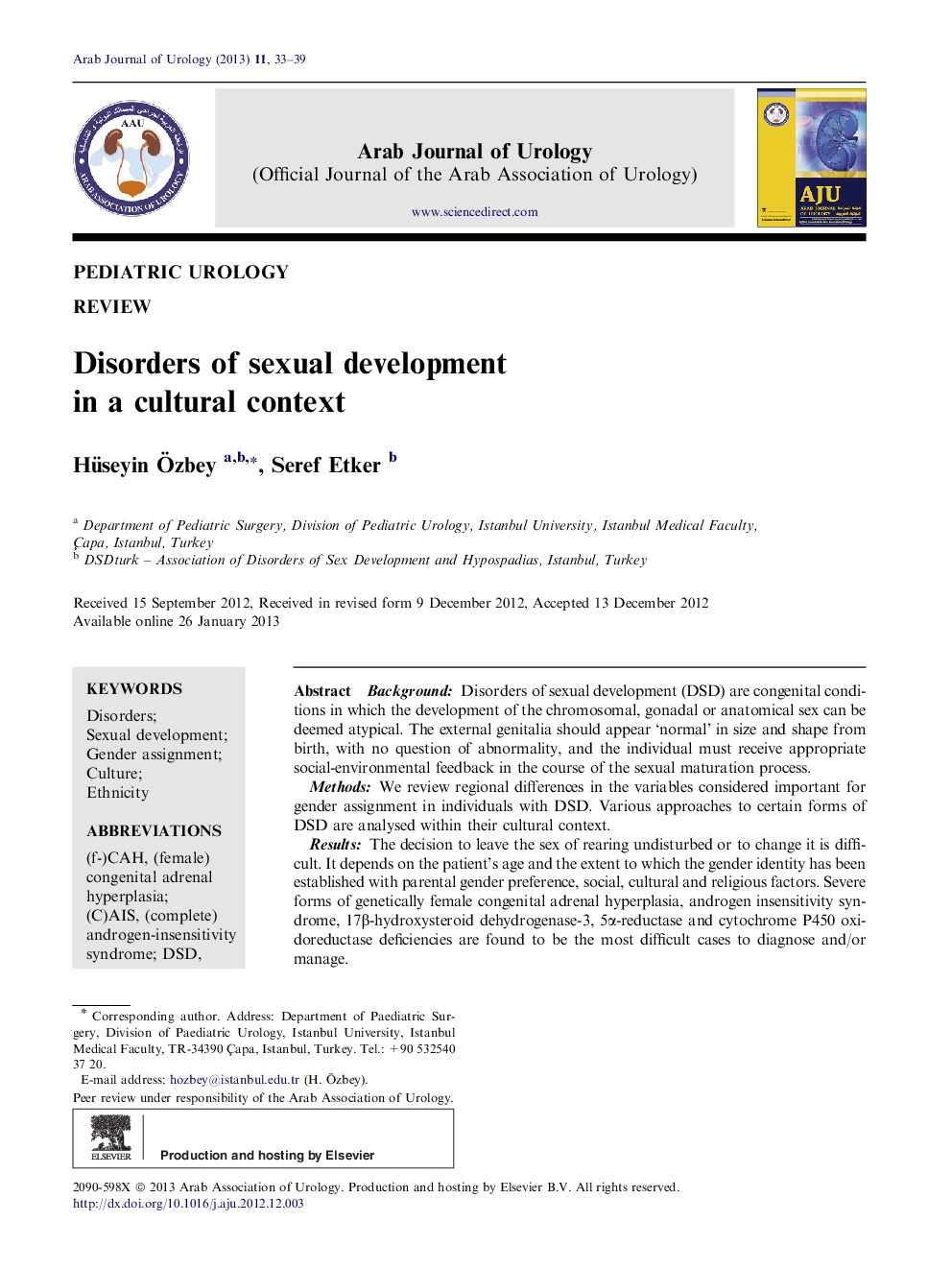| کد مقاله | کد نشریه | سال انتشار | مقاله انگلیسی | نسخه تمام متن |
|---|---|---|---|---|
| 4268118 | 1610743 | 2013 | 7 صفحه PDF | دانلود رایگان |

BackgroundDisorders of sexual development (DSD) are congenital conditions in which the development of the chromosomal, gonadal or anatomical sex can be deemed atypical. The external genitalia should appear ‘normal’ in size and shape from birth, with no question of abnormality, and the individual must receive appropriate social-environmental feedback in the course of the sexual maturation process.MethodsWe review regional differences in the variables considered important for gender assignment in individuals with DSD. Various approaches to certain forms of DSD are analysed within their cultural context.ResultsThe decision to leave the sex of rearing undisturbed or to change it is difficult. It depends on the patient’s age and the extent to which the gender identity has been established with parental gender preference, social, cultural and religious factors. Severe forms of genetically female congenital adrenal hyperplasia, androgen insensitivity syndrome, 17β-hydroxysteroid dehydrogenase-3, 5α-reductase and cytochrome P450 oxidoreductase deficiencies are found to be the most difficult cases to diagnose and/or manage.ConclusionGender assignment in children with DSD is a subject of intense debate. Each case of DSD must be evaluated individually and on its merits and potentials. Although early admission and appropriate diagnostic facilities could provide the correct diagnosis, this is not the case in some cultures. It is seen that ‘gender panic’, social and religious concepts affect the decision-making process in gender assignment, especially in delayed cases.
Journal: Arab Journal of Urology - Volume 11, Issue 1, March 2013, Pages 33–39